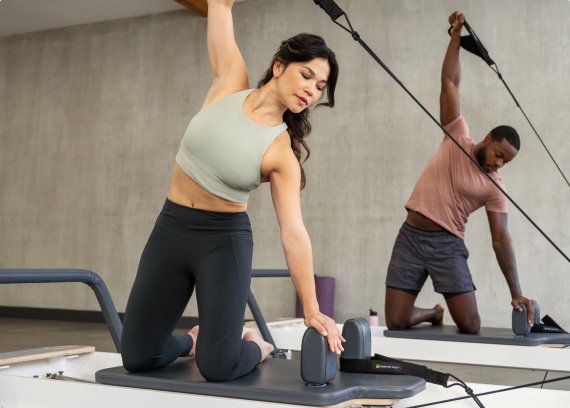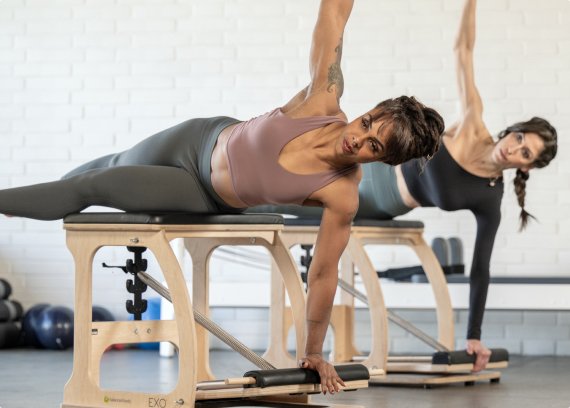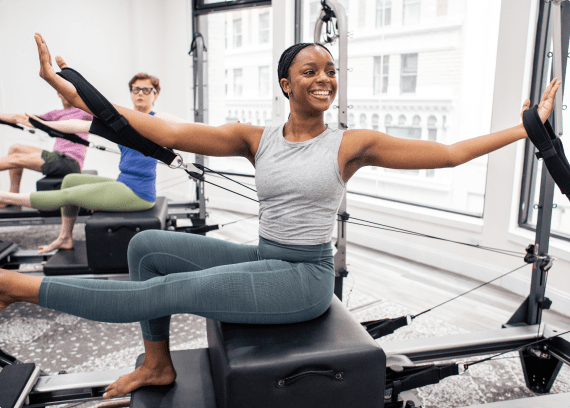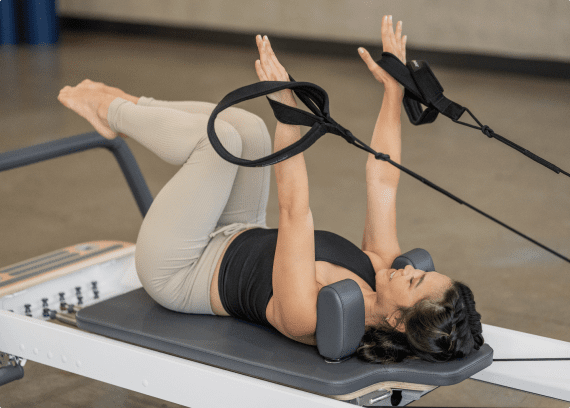Pilates and the Spinal Cord Compromised Client
Pilates and the Spinal Cord Compromised Client
By Allison Cabot, PT; Dawn-Marie Ickes, MPT; Gabrielle Shier, MPT
When an individual is afflicted with a spinal cord injury, there generally will be a loss of motor function and/or sensation at and below the level of injury. Where along the spine and how the injury took place will dictate the severity of the loss. The most common causes of spinal cord injury are motor vehicle accidents, gunshot wounds, and sports-related accidents or falls. Non-traumatic occurrences are classified as spinal cord dysfunction.
Establishing a wellness program is extremely beneficial for maintaining and improving the functional abilities and emotional well-being of patients with spinal cord injuries or dysfunction. A well-rounded program should include elements that enhance functional independence in addition to promoting fitness, balance, core strength, and spinal stability.
Staying well despite injury or dysfunction involves a commitment to a healthy lifestyle. Exercise is one step that, if properly executed, can enhance the functional ability of an individual afflicted with a spinal cord dysfunction. It also promotes general well-being and improved self-esteem. But with any exercise programming, precautions must be adhered to. Prior to initiating any exercise you must learn the indications and contraindications of this population. It is imperative to consult with a trained healthcare professional who specializes in spinal cord injury/dysfunction.
Pilates for Spinal Cord Injury Rehabilitation
Pilates when used in a rehabilitative capacity is an excellent choice of exercise for those individuals with a neurological impairment of the spine. It incorporates modern biomechanical principles focusing on posture, body alignment, and proper muscle recruitment. It challenges the proprioceptive system so that in a spinal cord injury client — you can strengthen the nerve-to-muscle message so that even if the muscle cannot be further strengthened, you can maintain or even strengthen the nerve message from the central nervous system. In addition, it facilitates the mind-body connection and breath for overall relaxation and one’s own awareness of body and self.
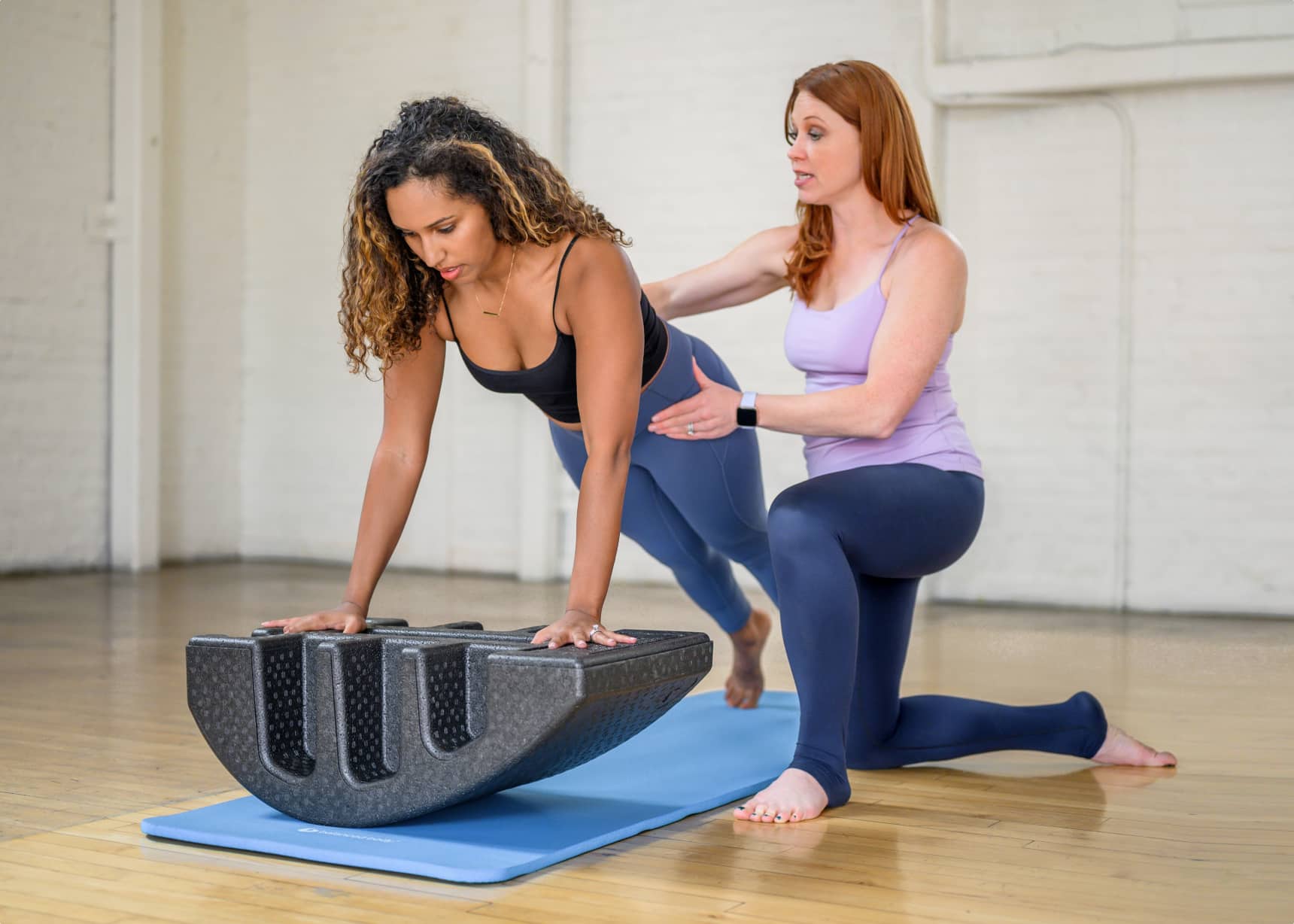
Pilates is ideal for disabled individuals because the repertoire is all-encompassing with over 500 exercises. In addition, every exercise can be modified according to the mobility and ability of the participant. Because Pilates uses spring resistance instead of weight-bearing exercises, spinal cord injury patients who have partial involvement can effectively strengthen their legs. Each exercise focuses on concentration, control, precision, and the fluidity of the movement. In addition, breath and core stability are key components of each exercise. It also is different from conventional weight training in that its focus is on facilitating the smaller stabilizing muscles and core musculature. These muscles are imperative in order to maximize normal function and restore trunk control.
Benefits of Pilates
The benefits of Pilates for a spinal cord patient include, but are not limited to:
- improved stability
- improved flexibility
- core strength
- shoulder, spinal and pelvic stability
- a more balanced musculature
- improved motivation
- and self-confidence/esteem.
Additionally, postural integrity is found and maintained. Best of all it is safe and effective.
Case Study: Patient with Spina Bifida
Mark* was ambulatory and functional but was unable to run and walked with a limp, one leg being much weaker than the other. He was highly motivated to strengthen “what he had” by doing lower body strengthening exercises at the gym. However, he experienced chronic knee and lower back pain. During the first year of his physical therapy, which included Pilates, his pain decreased by 90%! He showed remarkable improvements in strength and function.
Now, after 2 years, Mark has shown signs of increased strength in both legs, particularly in his weaker leg. Now his knees are pain-free and his limp has disappeared. However, when he attempts to strength train on his own at the gym, the pain returns. Not only is Mark an example of how Pilates can change the way a person moves, but it also illustrates how one must continue the practice to get the full benefit Pilates can offer.
Pilates Equipment for Spine Injury Patients
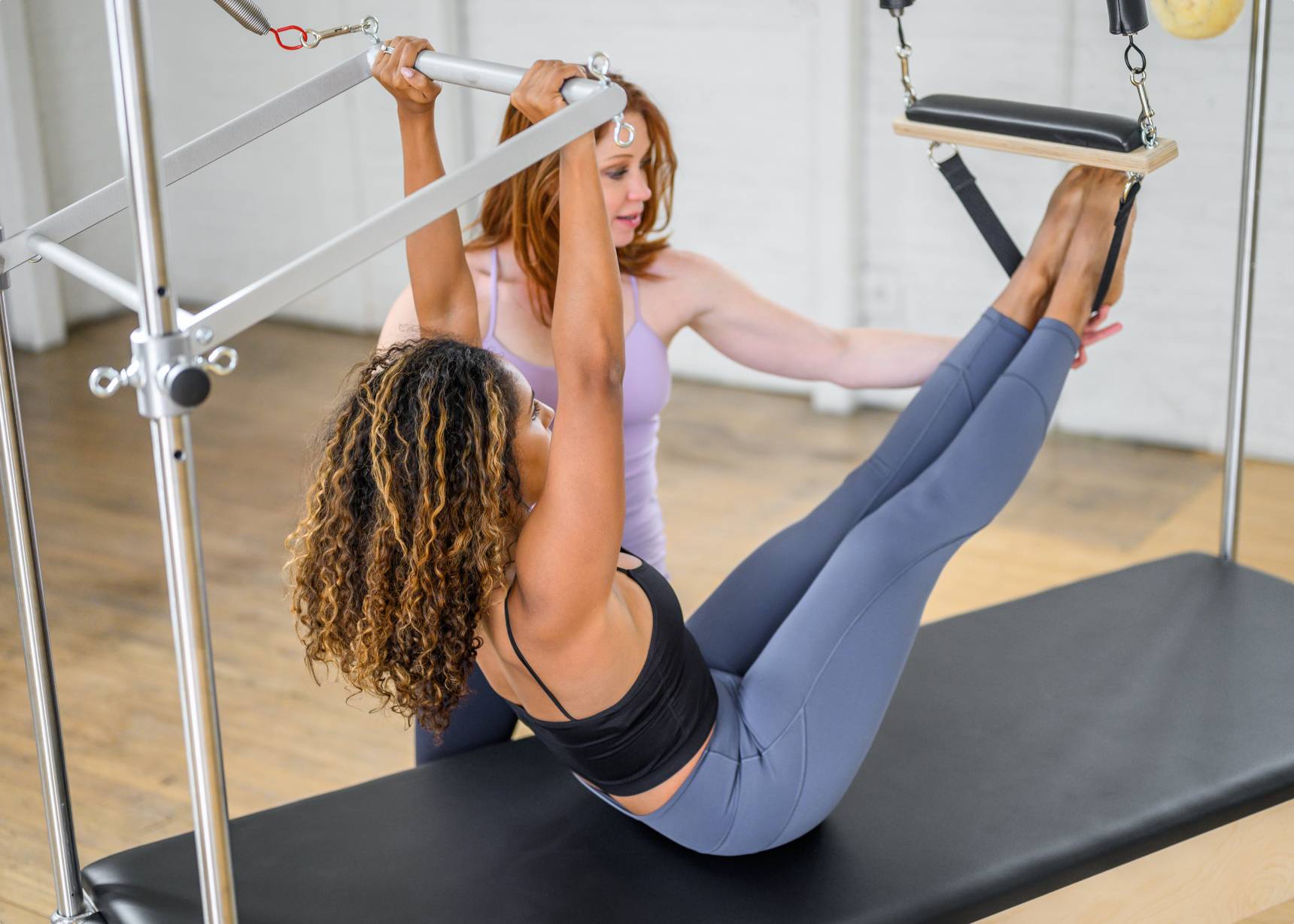
The inherent nature of Pilates equipment, which includes the Reformer, Cadillac, and Wunda chair, encompasses versatility and improves the effectiveness of exercises because of the springs. The springs come in various tensions and therefore can be utilized to produce different levels of tension. Utilization of the Pilates equipment should be performed only by those individuals who have been adequately trained. A trained Pilates instructor should be spotting their client at all times and if working with this population type should have adequate knowledge of how to work with a neurological client.
*Name has been changed to protect the identity of the patient
About the Authors
Allyson Cabot, PT, is a partner at Core Conditioning, integrated Wellness centers offering Pilates-based rehabilitation in Burbank and Studio City, CA. She holds a B.S. in Kinesiology from UCLA and graduated from CSULB in 1991 in Physical Therapy. She is certified in Pilates and Gyrotonic®.
Dawn-Marie Ickes, MPT, is a partner at Core Conditioning, integrated Wellness centers offering Pilates-based rehabilitation in Burbank and Studio City, CA. She holds a B.S. in Biology from Loyola Marymount University and graduated with a Masters in Physical Therapy from Mount Saint Mary’s College in 1996. She sits on the national Board of Directors for the Pilates Method Alliance. She is certified in Pilates.
Gabrielle Shrier, MPT, is a partner at Core Conditioning, integrated Wellness centers offering Pilates-based rehabilitation in Burbank and Studio City, CA. She holds a B.S. in Kinesiology from UCLA and graduated with a Masters in Physical Therapy from USC in 1994. She is certified in Pilates and Gyrotonic®.
As seen in the Summer 2008 Balanced Body Pilates COREterly

